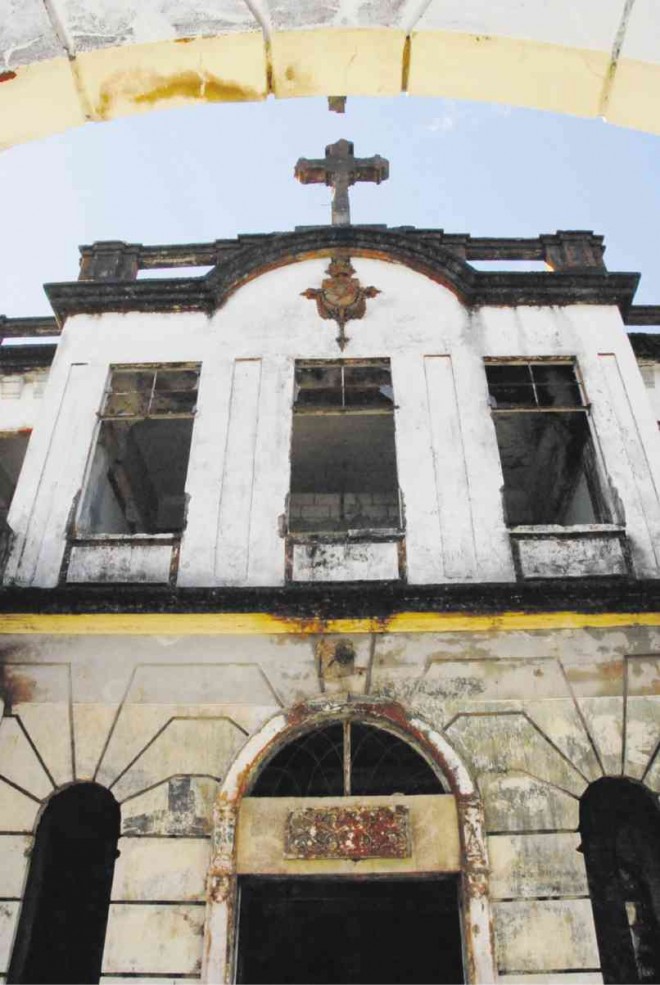Baguio’s ‘haunted hill’ @100
ONE OF BAGUIO City’s oldest heritage buildings—more popular for ghost stories than its historic legacy—turned a century old early this month, giving residents the opportunity to bring to light its relevance to a new generation.
In a Sept. 2 ceremony, the Dominican village and the city government celebrated the centennial of the Dominican Hill and Retreat House, a popular spot for ghost hunting in November or as the location shoot for horror films due to its chilling baroque facade.
The Dominican House was declared an important cultural property by the National Historical Commission of the Philippines on Sept. 1 last year.
The city government has classified the property as a heritage hill and natural park and has urged the public to express how it should be preserved.
The original retreat house was built on land bought by the Roman Catholic Church’s Dominican Order in 1913 when the American colonial government began populating the mountain city by auctioning parcels of land, according to the book “The Grand House the Dominicans Built: Before and Now.”
Baguio, the country’s summer capital, was designed and built from the ground up by the colonial government. Like the Americans, the Dominican friars built the retreat house so they could escape the tropical heat of Manila during summer, according to book author, Ruben Cervantes, the Dominican Retreat House administrator.
The Dominican house should have some resonance for modern Baguio because it was the first earthquake resistant building, he wrote. Baguio was devastated by the 1990 Luzon earthquake.
Baroque fortress
Its construction was overseen by Fr. Roque Ruano, a civil engineer from the University of Santo Tomas who raised “a baroque fortress” atop what is now the Dominican Hill.
The Dominican house was inaugurated on May 23, 1915 but it first served as a school—the Colegio del Santissimo Rosario—to evade colonial government taxes imposed on “grand houses,” Cervantes said.
In 1918, however, the Dominicans shut down the Colegio and used the building as a retreat house, after discovering in 1917 that the school had enrolled only six students.
“From 1920 to 1930, the [Baguio vacations of] Spanish families of Iloilo, Cebu and Manila … would not be complete without visiting the Dominican house to play handball, squash or pelota with their basque friar friends,” Cervantes said.
These “golden years” were shattered by World War II when Japan invaded the Philippines in 1941.
When Gen. Tomoyuki Yamashita moved the occupying Japanese Imperial Army headquarters to Baguio, the Dominican priests and nuns served as house helps for Japanese soldiers who turned the building into a prisoners-of-war camp.
It was the site of battle when Filipino guerrillas and American soldiers reclaimed the city from the Japanese, turning portions of the Dominican house into rubble.
In 1974, the Dominicans sold the property and the retreat house was converted into the 33-room Diplomat Hotel. But the hotel closed in the 1980s when one of its owners, faith healer Antonio Agpaoa, passed away.
Cervantes said ghost stories, magnified by reports of marching hooded friars, Japanese soldiers and wailing babies, circulated during the last years of the hotel.
When the hotel closed, it was looted and cannibalized. The city government had been rebuilding the structure inch by inch, but at a pace slowed down due to meager finances.
‘Love lock’
Recently, some of the village’s residents were inspired by France’s “love lock” phenomenon and had encouraged romantic pairs to install their love locks on the
Dominican house fence, hoping to erase the structure’s “haunted house” reputation.
Love locks are padlocks which couples clamped onto fences or any public monuments to express their love. These padlocks were considered nuisances in some European communities.
The Dominican house’s long-term use has been a matter of debate for years now. It was relinquished, with conditions, by Malacañang to the Baguio government in 2004.
In 2008, Baguio-born Delia Albert, former Philippine ambassador to Germany, proposed to convert the Dominican house into an interactive mining museum but she was challenged by a religious conservation group that wanted to turn it into a “spiritual mountain sanctuary.”
The city government is inclined to restore the structure as a hotel, but keeping Ruano’s original baroque design and upon the approval of the country’s heritage agencies, said Mayor Mauricio Domogan, who led the centennial program. With a report from Jessica Tabilin















